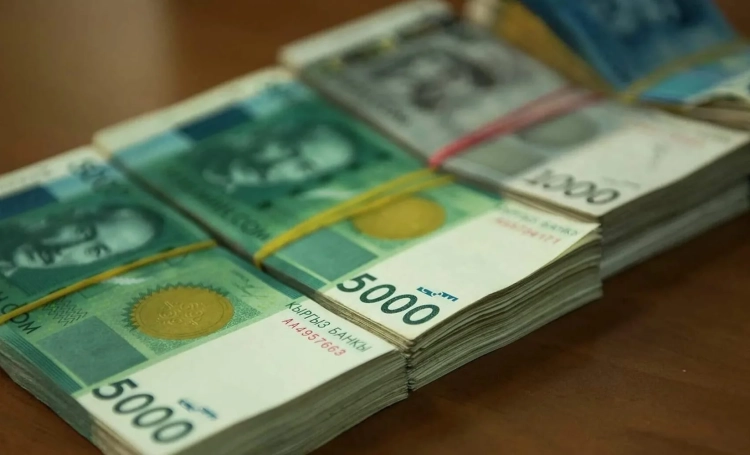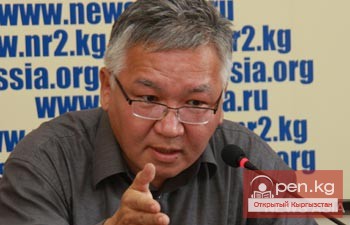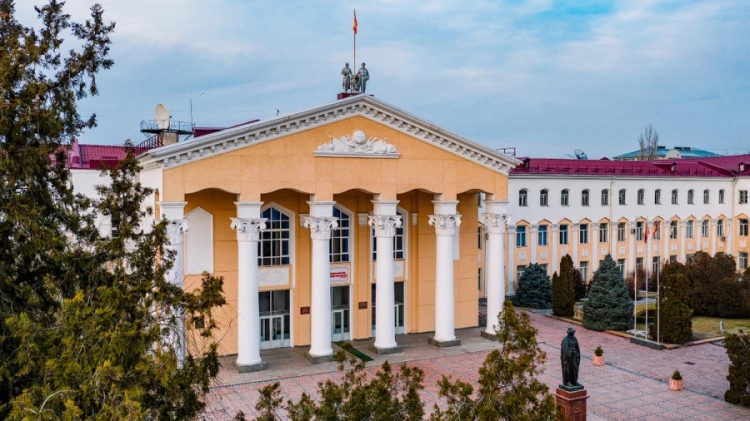
In the photo: Kyrgyz ceramicist Jumagul Tashiev showcases his vases in Bishkek in August. The Bishkek Business Club is helping him promote his clay dishes.
Currently, there are several thousand artisans in Kyrgyzstan who want to establish connections with their colleagues in other Central Asian countries, particularly Tajikistan.
Several thousand artisans from Kyrgyzstan are eager to expand their activities and establish connections with colleagues in other Central Asian countries.
The Bishkek Business Club (BBC) is assisting in this effort, contributing to the development of crafts in the country with the support of the European Union. In January, the BBC, together with the EU, launched a two-year project to support crafts titled "Crafts and Business through Regional Integration and Fair Trade Market."
“The budget is 587,000 euros (41 million soms),” said Elvira Karipova, project manager. “The goal of the project is to develop craftsmanship in Kyrgyzstan and Tajikistan... The project covers almost all types of craft activities and supports artisans, especially from the regions. They lack access to a large market, do not have the Internet, cannot promote their products, but they have talent.”
“We want to reach over 200 artisans and showcase information about them online,” she reported.
Development of Artisan Businesses
According to Karipova, over the six months of the project, the BBC has developed recommendations to improve the legislative framework.
“We met with artisans and received recommendations from them. A major problem for them is that they cannot export their products abroad; there is no [customs] classifier for craft products. And we are currently working on this,” she said.
As part of the project "Craftsmanship and Business through Regional Integration and Fair Trade Market," Tajik artisans specializing in ceramics, felt-making, jewelry, and woodworking arrived in Bishkek this summer to participate in a two-week seminar that began on July 21, reported the organization Central Asia Invest. The first week took place in Bishkek, and the second in Cholpon-Ata on the shores of Lake Issyk-Kul.
Experts from Italy trained Kyrgyz and Tajik artisans in creating “new products that reflect the best of Tajik and Kyrgyz traditional techniques, reinterpreted through the lens of modern European design,” according to Central Asia Invest. During the second week, they sold their products at the "Oymo-2014" crafts fair in Cholpon-Ata.
“The visit was very beneficial for the Tajik masters,” said Karipova. “Our masters managed to process felt in such a way that the unpleasant smell completely disappeared... Our artisans were not afraid to share their secrets with their Tajik colleagues.”
New International Opportunities
In addition to Tajik masters, artisans from India, Afghanistan, and Central Asia participated in the "Oymo-2014" fair.
“Many masters at the fair established new contacts, sales opportunities, and of course, sold a large number of their products,” said Karipova. “We are moving towards creating joint artisan enterprises between the Central Asian countries.”
Ceramicist Jumagul Tashiev from Bishkek, a participant in the BBC project, says that craftsmanship is quite profitable for him.
“I made vases, dishes, souvenirs, and jewelry from clay, which are eagerly bought,” he said. “I source the raw materials in the Chui region in Ivanovka... I mix it in a clay mixer, sift it manually, and pour it into molds.”
“This is a family business; my children and wife work with me. If it weren’t for craftsmanship, I don’t know how we would live. I have educated and raised all three of my children thanks to my craft. ... this is enough for a good life,” he says.
Another project participant, Sukhrab Saidov, a ceramicist from Tajikistan, shared that the craft was passed down to him from his ancestors, who practiced it as far back as the 19th century.
“Starting on my own meant being an artist, technician, and mathematician all in one. At a factory, the system is completely different; you do one thing.... Here, you draw the sketch yourself, calculate the heat in the kiln, knead the clay, and also find the raw materials. ... I must carry on my craft and pass it on to my children,” he says.
Asker Sultanov,
"CA online"






































